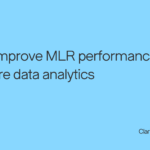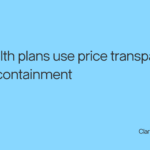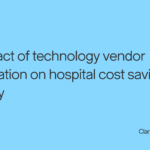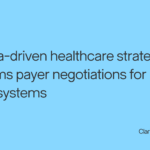Health plan cost containment may seem next to impossible in 2025, when healthcare costs are expected to reach their highest levels in 13 years. Combine the high cost of care with opaque provider pricing, and it can be tough for health plans to negotiate fair rates with providers and offer competitive rates to employers and individuals. The trend toward greater price transparency in healthcare offers health plans significant advantages. By accessing comprehensive price data, health plans can gain valuable insights into service costs, market trends, and provider performance, empowering them to negotiate better rates, design cost-efficient plans, and maintain a competitive edge. Health plans today face escalating healthcare costs without having clear visibility into the drivers of these expenses. It is not entirely clear what is causing the rise in healthcare costs. Experts point to factors such as inflation, an increase in specialized drug spending, and a growing population of older individuals with chronic conditions. These increasing costs, confusion about what is driving them, and a lack of insight into actual prices make it difficult for health plans to negotiate fair market rates with providers. That puts health plans at risk of overpaying for provider services, jeopardizing health plan cost containment. One of the most effective ways to combat rising costs is by gaining access to comprehensive market-wide cost data. By having a clearer view of pricing trends across various providers and regions, health plans can better understand where inefficiencies and cost disparities exist. With access to such data, health plans are in a better position to negotiate fairer rates and address outlier pricing that may be driving up costs. Competitive intelligence platforms offer health plans valuable market data and clarity into pricing across providers and regions. This helps them zero in on overpayment risks, market inefficiencies, and outlier pricing, ensuring they approach negotiations with confidence. Benchmarking helps health plans compare provider pricing, allowing them to identify cost-effective providers and build networks with high-quality and cost-effective care. However, developing these benchmarks is often difficult without detailed data on costs and provider performance. This means health plans negotiate rates without the insights they need to design cost-effective contracts. Pricing transparency allows health plans to compare costs by region, provider type, performance, and other factors, and develop benchmarks accordingly. This information strengthens their negotiation position, helping health plans contract with high-performing providers and improve their cost containment. Health plans often struggle to implement effective cost-containment strategies because they rely on outdated methods or incomplete data. Incomplete information and outdated approaches that don’t incorporate real-time data and analytics can hinder health plans’ efforts to manage costs effectively. Advanced analytics platforms that use real-time pricing data can uncover areas of inefficiency and opportunities for improving cost containment. These might include adjusting provider contracts, offering more cost-efficient plan or tier options, optimizing networks, and creating more accurate budgets based on cost forecasts. Data-driven insights into provider performance and pricing can also help health plans identify specific providers with higher costs. They then can communicate with the provider to address the issue, working together to keep costs within acceptable ranges. Solutions might include strategies like offering more telemedicine appointments, promoting generic drugs, or vendor consolidation. In the wake of inflationary pressures and health system consolidation, health plans must differentiate themselves to attract employers, brokers, and members. However, opaque pricing can undermine trust, making it difficult for health plans to position themselves as cost-conscious or value-driven. Showcasing cost efficiency and value with offerings that incorporate price transparency can help plans stand out from the competition. Highlighting features like member portals and cost estimation tools can instill confidence in consumers and employers and set a plan apart. Additional examples can include using case studies or cost comparisons of maternity care or diabetes management in a health plan’s marketing materials to highlight value and cost-effectiveness. Disputes over pricing and payment rates are common points of friction between health plans and providers. Both plans and providers may not have accurate pricing data or have a skewed impression of average costs, leading to distrust and difficulty in coming to an agreement. Transparent pricing data gives both sides a clear understanding of costs and fair provider benchmarks, cultivating a sense of collaboration and trust. This can serve as a strong foundation for negotiations, paving the way for more sustainable agreements and respectful, mutually beneficial relationships. With limited control over rising healthcare costs, health plans can use price transparency to create strategies to contain them. Leveraging pricing transparency data helps ensure that they contract fair rates with providers, develop appropriate benchmarks for provider pricing, and identify and address potential inefficiencies driving up costs. Implementing these tactics can also support better relationships with providers and help health plans establish themselves as the cost-effective choice among employers and individuals. Thriving in an increasingly cost-conscious and competitive healthcare environment demands immediate action to gain a comprehensive and detailed view of pricing. With financial pressures mounting, health plan leaders must urgently prioritize integrating tools like market intelligence and data analytics platforms to maintain cost efficiency and containment before falling behind. Price transparency and rates negotiation
Better visibility into market benchmarks
Greater insights into strategic inefficiencies for health plan cost containment
Using price transparency to differentiate health plans from competitors
Leveraging price transparency to improve relationships with providers
Price transparency: A key driver of health plan cost containment
Payer: Health Plan Insights | January 22, 2025
How health plan cost containment benefits from price transparency
Reporting that’s committed to making healthcare insights accessible to all.

The complexity of healthcare data. Clarified.

Made for your most precise decision-making yet. Introducing the Clarify Atlas Platform®, our healthcare analytics platform and the foundation underpinning each of our building blocks. Atlas powers every decision with clarity brought from 20 billion data points and our best-in-class benchmarking technology.

Made for your most precise decision-making yet. Introducing the Clarify Atlas Platform®, our healthcare analytics platform and the foundation underpinning each of our building blocks. Atlas powers every decision with clarity brought from 20 billion data points and our best-in-class benchmarking technology.



